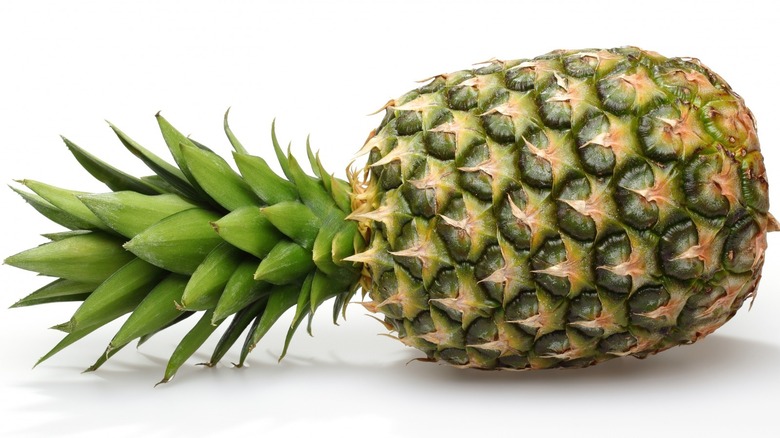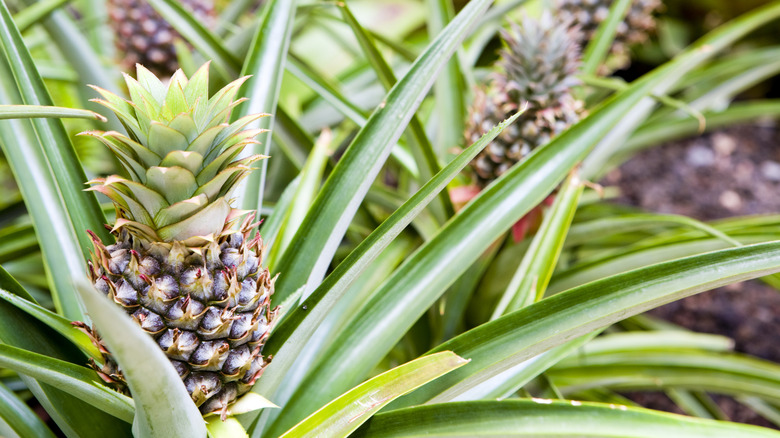Apparently, One Pineapple Is Not A Single Fruit. Here's Why
Many people love the delicious taste of pineapple. But few of them know much about how their fruit salads, smoothies, and pineapple cocktails end up enhanced with this incredibly unique tropical fruit. In fact, it's not a single fruit at all!
Pineapples don't share any of the common characteristics of pines or apples. They are what's known as a multiple fruit, sometimes called a collective or composite fruit. They come to be when a plant puts out a cluster of flowers known as an inflorescence. Each flower produces its own separate berry-style fruit, which then all grow together as the pineapple develops, with the interior spaces becoming sweet and juicy, which is why pineapples are so beloved in recipes. You can see the remnants of these individual units in the circular-shaped pattern on a pineapple's exterior. Other common examples of multiple fruit include figs, mulberry, breadfruit, and jackfruit.
Composite fruits develop to allow plants to conserve resources when growing in nutrient-poor or water-scarce environments as well as to make it more effective for wild pollinators to access many flowers at once. They also allow efficient seed dispersal if bigger animals eat an entire large fruit with many seeds instead of only a few smaller ones.
Not your average plant
This isn't the only notable aspect of the pineapple plant that is generally uncommon among our more familiar fruit plants. On a botanical level, they belong to the bromeliad family, a group better known for showy ornamental plants than edible fruits. Commercially, they're almost always grown via propagation of slips and suckers rather than from seed like many other fruits and vegetables.
Those who'd like to watch the process themselves can do so with nothing more than a store-bought pineapple and a large pot of soil. Twist the entire crown (the leafy part) off the pineapple, and then strip the leaves off the bottom one to two inches. This crown can be either planted directly in the pot or suspended in water as roots develop first. Don't expect fast results. Growing pineapples requires more patience than most edible plants, sometimes taking more than two years to produce fruit. Even then, each plant only produces a single pineapple. Well, not precisely single — as you now know!

